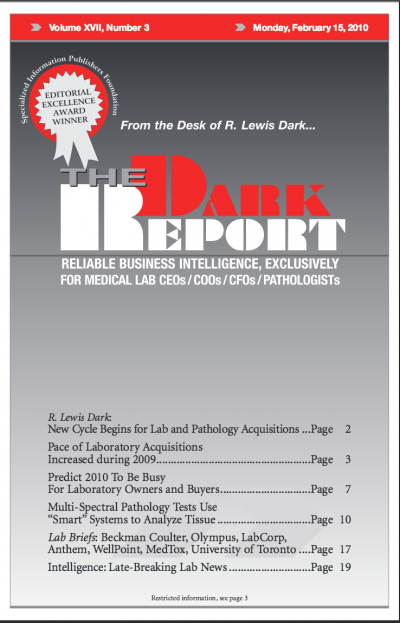CEO SUMMARY: After two years of relatively slow sales of clinical labs, there is pent up demand for lab acquisitions and a declining supply of independent labs available for sale. That’s the assessment of one expert on laboratory mergers and acquisitions, who predicts that the accelerating pace of clinical lab and anatomic pathology practice acquisitions […]
To access this post, you must purchase The Dark Report.


